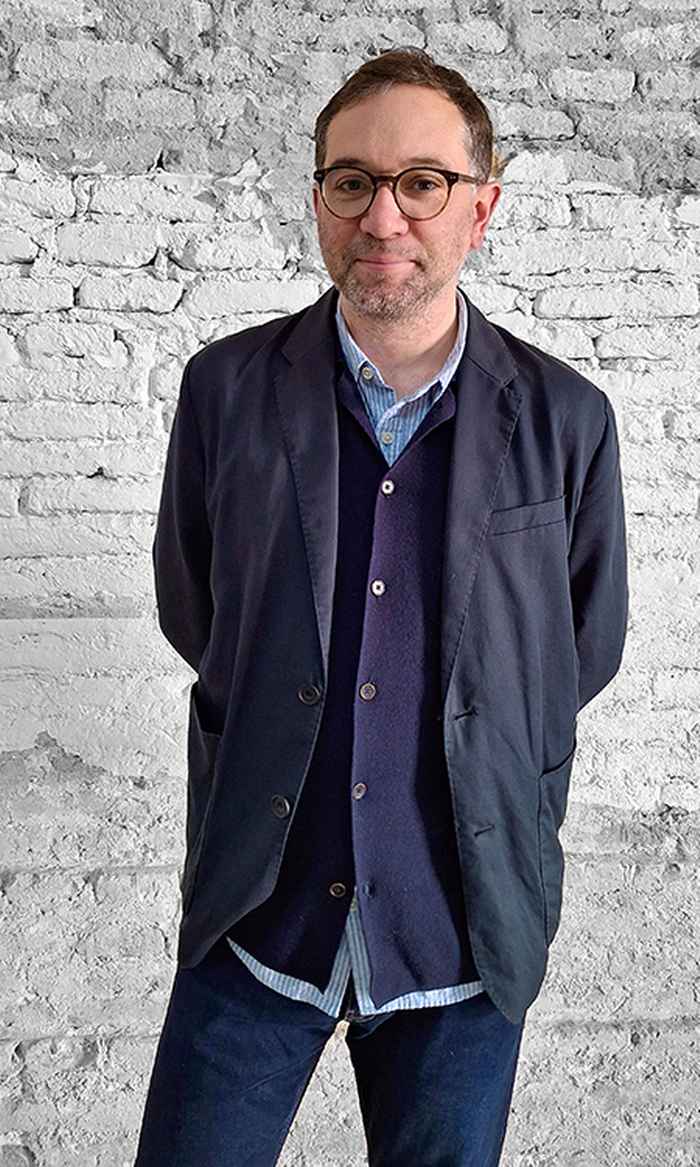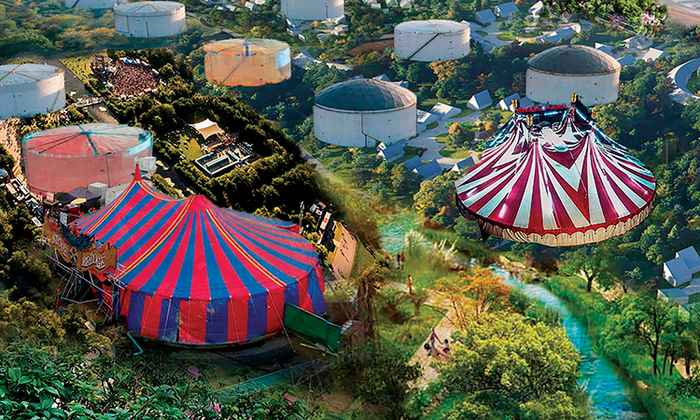‘Let us make no mistake: the climate crisis is also a crisis of culture, and thus of the imagination.’
3 June 2024

For most of us the interconnectedness between the art world, big oil companies, and the climate crisis was beyond our scope till we saw the first images of activists entering museums, glueing themselves to paintings and drinking a dark, oil-like syrup from scallop shells with Shell’s logo on it.
It was organisations like Fossil Free Culture that raised awareness and made institutions like the Van Gogh Museum end its 18-year sponsorship deal with Shell, and Naturalis announce it was the first Dutch museum to end all forms of cooperation with the fossil industry.
This very subject, the intersections of heritage and petroculture, is exactly what makes Colin Sterling tick. Sterling is an Assistant Professor of Heritage, Museums and the Environment at the UvA, and his research critically examines heritage and museums through the lens of art and ecology. Together with his colleague Jeff Diamanti, he just started a four-year project called PITCH: Petroculture’s Intersections with Cultural Heritage, funded by the EU as part of Horizon Europe. The project – which involves ten partners across Europe – responds to a specific call on Cultural Heritage in Transformation: Facing Change with Confidence.
Sterling agrees that for broader society, the bigger question is how cultural institutions can bring people along on the journey of the green transition and make sure it's a just transition. But for him, it’s the formation and practice of heritage that interests him most. Sterling: ‘There's been a huge amount of exhibitions, artistic work and creative projects about climate change, that story is being told, but cultural institutions now have to change their own ways of working. It's that shift that I'm interested in, both in terms of analysing as a researcher, but also trying to help push further.’
It's not just a question of changing technologies
He explains: ‘One of the biggest discussions whenever I speak to people in the museum field is around climate control and how to create specific atmospheric conditions within museums and gallery spaces, which often requires a huge amount of energy. Relaxing these controls is seen by many people as one of the biggest interventions an institution can make to become more climate-friendly. There are also important questions to be asked about things like blockbuster exhibitions and the role heritage and museums play in international tourism.'
'But whatever aspect of work you look at, it’s not just a question of reducing energy or addressing waste or pollution. Who your audiences are, what communities you are serving, and why you might be preserving some things rather than others are also vital aspects of climate action.’
Oil as the creater of new forms of heritage
A common theory about heritage in Europe, according to Sterling, is that certain attitudes about history and preservation emerged during the Industrial Revolution, and were part of a fossil fuel-driven society. Sterling: ‘The rapid technological changes that those things brought about led to a dislocation with society and land and memory. Because things started to change so quickly, people started to care more about the past and wanted to preserve and protect that past.’
The dislocation he talks about is both a literal dislocation, where many people moved from rural areas into cities, the kind of urbanisation that went hand in hand with the rise of fossil fuels and the industrial revolution, but also a dislocation in time and in sense of identity and in sense of connection to the land. Together with his colleagues, Sterling wants to look back at that narrative and think deeper about the specific role oil, petroculture and fossil fuels played in that process, but also about the creation of new forms of heritage by the emergence of oil.
Sterling: ‘There's this complicated connection between the rapid change that these things brought about and how oil companies then promoted certain ideas of national heritage.’ An example of this, Sterling mentions, is Shell UK publishing a series of guides to Britain which became very popular after the Second World War and promoted both heritage tourism and the use of cars.

The power of heritage in helping us face climate change
Understanding the historical dimension, learning how rapid change was negotiated by different nations and communities, is the foundation of his project, he says. ‘This is needed to help citizens today, in times of climate change and anxiety, to face with confidence the major change that we hope will be happening in the next ten to thirty years: the move towards a post-fossil fuel world.’
When asked whether he dares to visualize this new world, he laughs and says it’s one of the things they’re keen to do. They’ve asked Selçuk Balamir to join their Pitch project. Balamir was the designer/researcher in charge of the After Shell Calender, with images and stories of a fossil-free world: repurposed oil rigs, old gas pipelines turned into clean oxygen pipes and healthy urban regeneration.
Sterling and Diamanti are focusing their research on a repurposed coal station. It’s the art centre E-Werk Luckenwalde, south of Berlin, the first arts institution to bring electricity production in-house. Sterling: ‘It's a site where you can actually see the energy transition embodied in the physical fabric of the building and in their programming. For us, it’s a case study of how to bring the local community along on that journey, so then it becomes a microcosm of the idea that showing the complex connection between heritage and the use of energy can help citizens face change with confidence.’
It's not for lack of interesting heritage places to study in The Netherlands that the research project is focused on Germany. Sterling: ‘I really like being here, there's so much going on.’ His personal favourite of new ways to present and interact with our heritage and his tip for us is to visit the Zoöp Nieuwe Instituut in Rotterdam.
Elles Tukker
UvA Sustainability Platform (USP)
